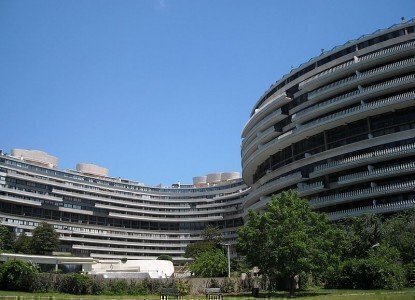Editor's Note: This story first ran on the 40th anniversary of the Watergate break-in in 2012 and it is updated in some locations.
The 44th anniversary of the Watergate break-in is this year, but its two biggest mysteries remain unsolved, despite multiple theories from people close to the story.
 For years, there were questions that nagged investigators, historians and conspiracy theorists: Who was “Deep Throat,” the source used by the Washington Post?; Did President Richard Nixon personally authorize the break-in?; and Why did the break-in happen to begin with?
For years, there were questions that nagged investigators, historians and conspiracy theorists: Who was “Deep Throat,” the source used by the Washington Post?; Did President Richard Nixon personally authorize the break-in?; and Why did the break-in happen to begin with?
The disclosure by the late Mark Felt that he was “Deep Throat” solved one part of the mystery (for most people).
What remains are the final two mysteries, which are intertwined and still actively debated.
One fact is beyond debate: On June 17, 1972, five men connected to the Nixon re-election campaign were caught by Washington metropolitan police burglarizing the headquarters of the rival Democratic National Committee, and the office of its chairman, Lawrence O’Brien.
In the two years of media coverage after the break-in until Nixon's resignation, little attention was given to the reason for the break-in and if Nixon ordered it directly.
On the tapes made in the White House at the time, Nixon denied knowing about the break-in ahead of time, and his political and legal troubles were related to covering up his campaign’s connection to the crime – and not the break-in. In recent years, the topics have spawned multiple theories, from ideas that Nixon was clueless about the crime or he directly ordered it, to suggestions that the burglars were looking for information related to Howard Hughes, Fidel Castro, call girls, kickbacks, and skullduggery by the Democrats themselves.
Typical of the speculation was an April 2012 article by Ron Rosenbaum in Slate.com, which adhered to the theory that Nixon ordered the burglary to dig up the goods on a connection between Howard Hughes and O’Brien, the DNC chair who once worked for Hughes and that connection could embarrass Nixon. (A quick Google search shows Rosenbaum stating the same theories in 1999.) Rosenbaum also calls out Bob Woodward and Carl Bernstein in his Slate story, asking them to solve the two mysteries in their upcoming documentary with Robert Redford.
On the other end of the spectrum was John Dean, the lawyer who turned from Nixon's White House counsel to the star witness against Nixon's administration. Dean wasn’t a Nixon fan, but in 2009, he told Keith Olbermann that Nixon operatives were looking for information about illegal activity by the Democrats in Miami. Dean didn’t know if Nixon ordered the break-in at the Watergate.
Also, several men on the break-in team were Cuban émigrés and they claimed they were told by GOP operatives the Democrats had some connection to money coming from Fidel Castro, and the mission was to find evidence to support that theory.
What’s for sure is that no clear “smoking gun” tape exists that explains the motives for the break-in or Nixon’s direct role.
In their first joint byline in the Washington Post in 36 years, Woodward and Bernstein in 2012 discussed the Watergate break-in's historical impact.
“At its most virulent, Watergate was a brazen and daring assault, led by Nixon himself, against the heart of American democracy: the Constitution, our system of free elections, the rule of law,” the authors wrote. But the op-ed story didn’t discuss the direct motive for the Watergate break-in.
Typical of the mythology about the incident was a widely cited story by the New York Times’ J. Anthony Lucas in 1987, where he confronts three key Watergate players at a Hofstra symposium. In Lucas’s story, Bob Haldeman said he doesn’t know why the Watergate burglary was done, then Jeb Magruder said the break-in was a fishing expedition about alleged payments from Howard Hughes to Nixon’s friend, Bebe Rebozo. Lucas then bumped into Charles Colson, who quipped that the burglars were looking for info on Hughes and Rebozo, but the break-in was done on the behalf of Hughes, and not Nixon.
Scott Bomboy is the editor in chief of the National Constitution Center.







